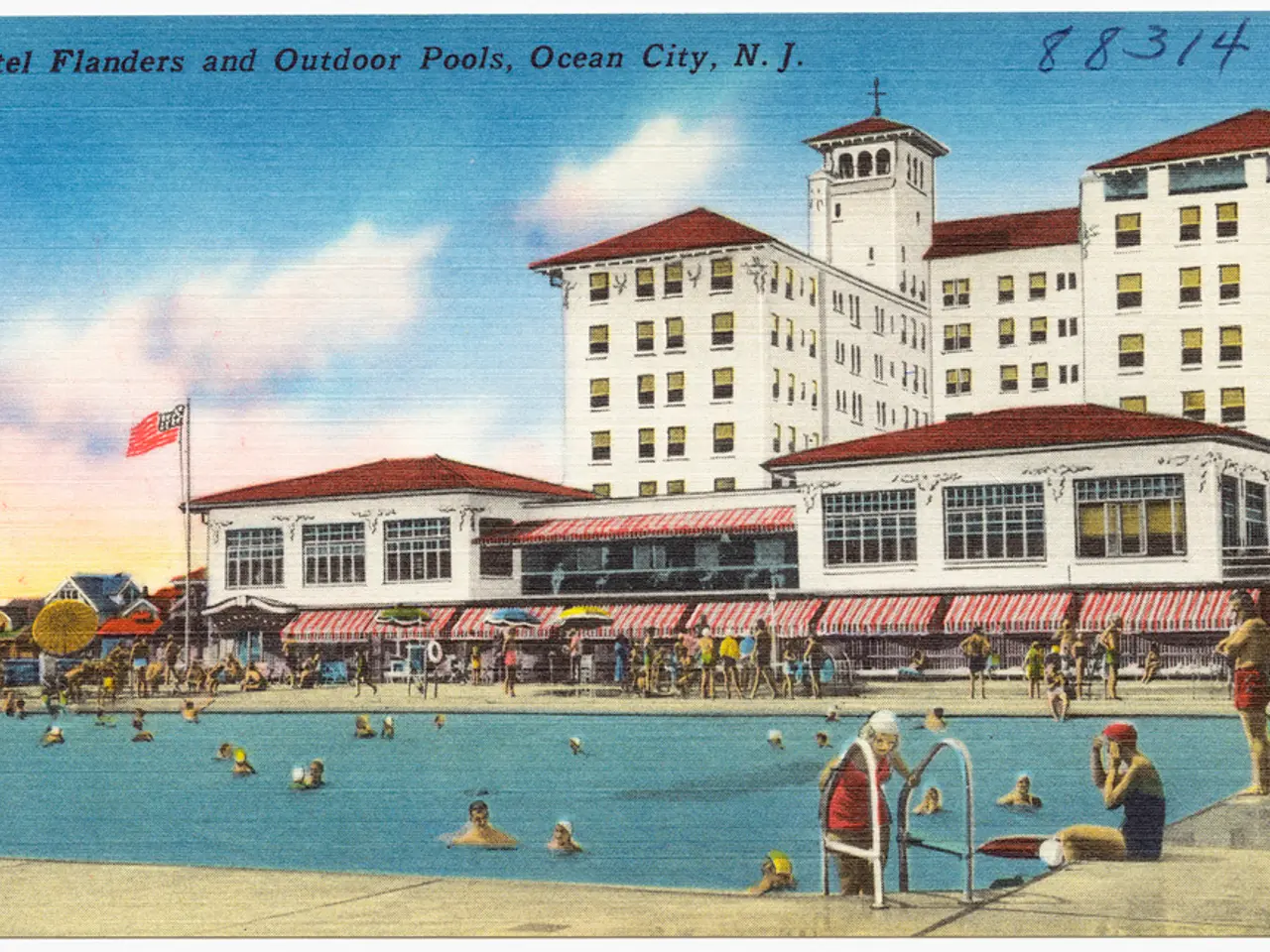A Film Blurring Genre Lines and Challenging Modern Filmmaking Standards
In the ever-evolving landscape of modern cinema, a revolutionary shift is taking place. Filmmakers are daring to blend genres, creating a dynamic tapestry that defies traditional storytelling and pushes the boundaries of cinematic expression. This trend is exemplified by a number of genre-bending films that have emerged as masterpieces, seamlessly combining diverse styles and employing innovative cinematic techniques.
These films, such as Park Chan-wook's The Handmaiden, Black Bear, The Coffee Table, Sanctuary, and Who by Fire, offer a rich tapestry of narrative and visual experiences that keep audiences on the edge of their seats. The Handmaiden, for instance, is a Victorian melodrama, Gothic romance, psychological thriller, erotic drama, and period piece all rolled into one, set under Japanese-occupied 1930s Korea. Its layered plot involving manipulation and passion is further deepened by twisty storytelling and stylistic visuals.
Black Bear, a meta, mind-bending drama, explores themes of creation, control, and chaos as it navigates two parallel realities. Its narrative structure challenges viewers to piece together fragmented realities, supported by intense performances. The Coffee Table, a Spanish horror-black-comedy, subverts genre expectations with domestic absurdism while delivering a psychologically intense character study.
Sanctuary, set entirely in a hotel suite over one night, artfully blends comedy, drama, romance, and thriller genres, using absurd psychological scenarios to explore power dynamics, shame, and identity. Its confined setting is exploited through innovative pacing, visuals, and committed performances, resulting in an intense, mind-blowing experience.
Who by Fire presents an ensemble drama with horror-like tension through cinematography isolating characters and building unease. Progressive revelations focus on modern masculinity through complex interpersonal dynamics, enhanced by inventive framing and character interplay.
The blend of genres in these films allows for more creative freedom in cinematography, resulting in visually stunning scenes. Long takes are used to immerse viewers into the continuous flow of action without the disruption of cuts. The strategic use of color grading transforms scenes to evoke specific moods and atmospheres, further enhancing the narrative depth. Experimental sound design blends diegetic and non-diegetic sounds to blur the lines between reality and imagination, enriching the auditory experience.
Genre-bending films, like the ones mentioned, possess a unique magnetism that draws viewers into their multifaceted worlds. The unpredictability of these films can evoke a spectrum of emotions, from laughter to tears, all within the same viewing experience. Characters in these films exhibit multi-dimensional traits, making them more relatable and compelling. The hero, for instance, is often a multifaceted individual with moral ambiguities, while the villain has deeply explored motivations, revealing a tragic backstory that evokes empathy. The sidekick character, too, has their own narrative arc, complete with personal growth and significant contributions to the story.
Dynamic camera movements are constantly shifting perspectives, keeping the audience engaged and invested. Non-linear storytelling is used to weave together multiple timelines to create a rich tapestry of interconnected events. These films attract diverse audiences by incorporating elements that resonate with different tastes and preferences.
In conclusion, the fusion of genres in modern film is a revolutionary shift, crafting films that are both familiar and entirely new, captivating viewers with unexpected twists and multifaceted characters. These genre-bending masterpieces are redefining cinematic expression and pushing the boundaries of modern cinema.
- These genre-bending films, such as Park Chan-wook's "The Handmaiden," "Black Bear," "The Coffee Table," "Sanctuary," and "Who by Fire," showcase a harmonious blend of multiple storytelling genres that keep audiences enthralled.
- "Black Bear," a meta, mind-bending drama, integrates themes of creation, control, and chaos – offering viewers a challenging yet immersive narrative.
- "The Coffee Table," a Spanish horror-black-comedy, redefines genre boundaries with domestic absurdism, resulting in a psychologically intense character examination.
- "Sanctuary" deftly unites comedy, drama, romance, and thriller genres through absurd psychological scenarios, masterfully demonstrating power dynamics, shame, and identity.
- "Who by Fire" presents an ensemble drama that skillfully creates horror-like tension with inventive cinematography and complex interpersonal dynamics, focusing on modern masculinity.
- Experimental sound design and strategic color grading in genre-bending films contribute significantly to the evolution of cinematic expression, enhancing the visual and auditory experiences.
- The captivating worlds created by genre-bending films, such as those mentioned, cater to a wide array of audience preferences and tastes, providing emotional depth, relatable characters, and unpredictability.
- Embracing the fusion of film genres, these dynamic cinematic masterpieces redefine modern cinema, captivating audiences with visually stunning scenes, innovative storytelling, and thought-provoking narratives.




